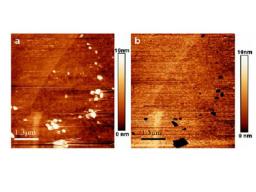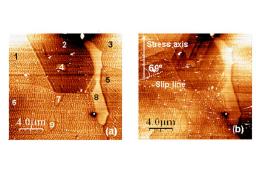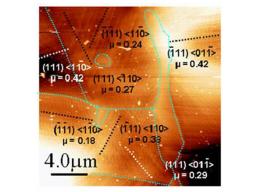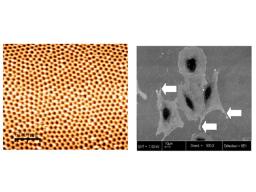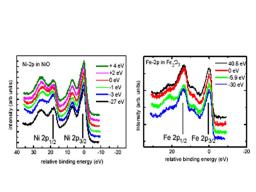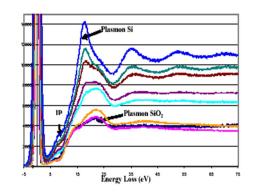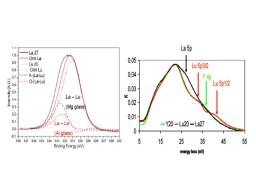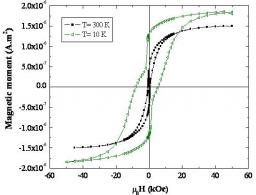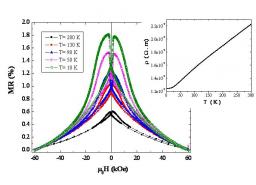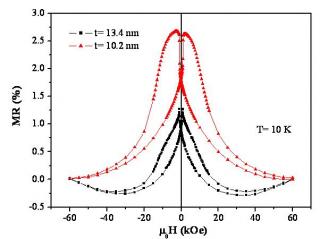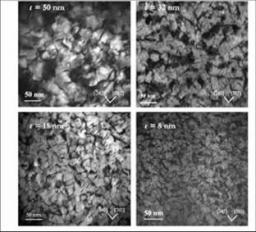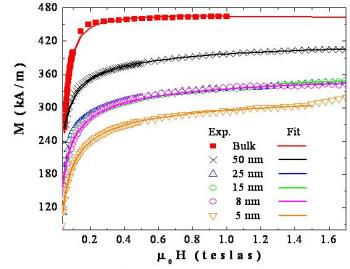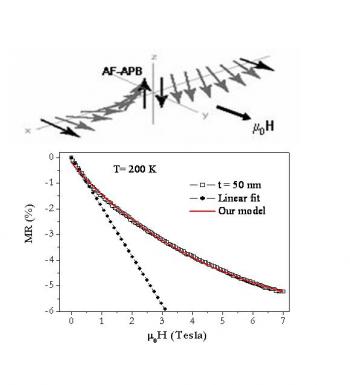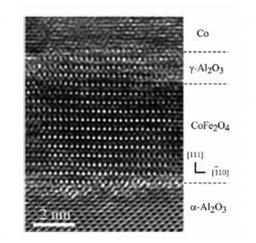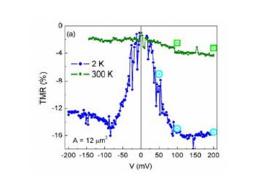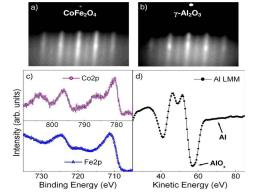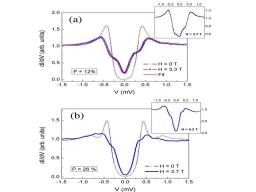
The oxides represent a vast whole of materials inside which one finds the main part of the physical properties exploited in the current devices: they can be for example insulating, semiconductor, ferromagnetic or antiferromagnetic. The nanometric oxide layers are currently in the heart of the nanotechnologies like the spin electronics and the development of new electronic components (CMOS). Also the group works it on the growth and the electronic and magnetic properties of oxides being able to have potential applications in these two fields. The massive and single-crystal oxide study is of more fundamental interest as model systems for the comprehension of well defined properties. In particular, magnetite Fe3O4 presents a strong spin polarization which makes it very interesting like electrode in magnetic tunnel junctions. We have developed a procedure allowing to realize the growth of epitaxial Fe3O4 thin films, then to deposit on this electrode a tunnel barrier of crystalline alumina. Epitaxial tunnel junctions are thus obtained. Simultaneously with these studies which are placed within the framework of the spin electronics, we study also nanometric oxides layers with high permittivity, which could in the long term replace silicon oxide in very miniaturized CMOS devices.
The group is equipped with several chambers under ultra-high vacuum, allowing for example:
- the deposition of thin oxides layers by molecular beam epitaxy assisted by an oxygen plasma source, with the follow-up of the growth in real time by RHEED, and the characterization of the in-situ layers by Auger and XPS ,
- the study in-situ of the magneto-optical properties by Kerr effect
- the study of the electronic properties of surfaces and the nanometric layers by X and UV- ray photoemission electron spectroscopy
- the measurement of the macroscopic magnetic properties by vibrating sample magnetometry (VSM)
- the measurement of magneto-transport properties) of thin layers
Moreover, our group has a solid experiment in techniques using the synchrotron radiation, like the magnetic diffraction of surface, the high photoemission and low energy... and regularly conducts campaigns of experiments on the European synchrotrons.
Vous devez préciser l'id_ast dans la table des unités.


